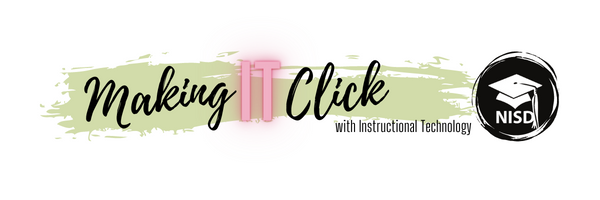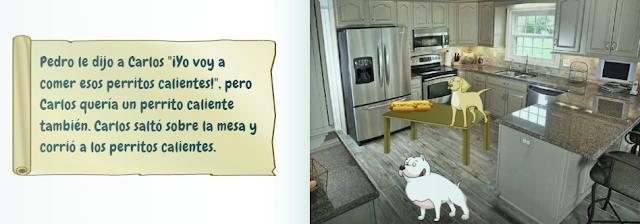Learning a foreign language can be, well, foreign sometimes! On top of mastering new vocabulary and verb conjugations, students in Pre-AP Spanish II are also learning the difference between two past tenses, preterite and imperfect, and then identifying the corresponding verb conjugation for that correct past tense - whew! In Spanish, you must differentiate between the two types of past tense shown the below table.
Preterite Tense
|
Imperfect Tense
| |
Definition
|
A completed action in the past
|
Ongoing, repeated, or past actions without implied specific beginning or end
|
Example
|
“He put his hand through the car window.”
|
“The birds sang.”
|
It’s been said that mastering preterite and imperfect can be done through repetition in that the more you do it, the better you will get at it. While this skill can be sharpened through worksheets or practice sentences, this concept is a difficult one that gets solidified in memory when it is applied. Language is developed through speaking, listening, reading, and writing, so what avenue is best to facilitate this language acquisition?
Asking a high school student to speak in front of their peers is scary enough, add on top of that the factors of the language not being their primary one, compiled with a new and super challenging concept as well as one that requires much thought before the actual sentence is constructed. Listening and reading are both effective in learning the content, but both of these depend on teacher-facilitated content consumption rather than student-driven content creation. So, two Byron Nelson Pre-AP Spanish teachers, Matt Condon and Isabel Greuling, created the perfect project to get the best mix of language development through product creation with appropriate scaffolds to facilitate student success. Students were tasked with writing their own Spanish Children’s Story Book!
To communicate clear expectations, students received this Rubric, Requirements, and Rough Draft document which contains intentional planning tools such as separate boxes to pre-write two sentences per page, a space to plan vocabulary that will be used and its translation in both English and Spanish, and instructions to highlight verbs and grammar. To facilitate effective story development, students also completed this StoryStarter questionnaire to help students develop the concept prior to developing the language used to describe it. To gain quality peer feedback, students reviewed each other’s rough drafts using this Peer Edit Guiding Questions. Lastly, students constructed their final draft using the online story creator site: Story Jumper; those who are more artistically advanced or who prefer to work offline also had the option to creating a physical book that meets these same requirements.
Below are a few exemplars. Click each image to view the full version within Story Jumper.
 |
| Teacher Feedback: Dylan exceeded the project’s expectations on this activity by creating a funny, original story with a surprise ending and using correct preterite & imperfect usage to narrate the book. |
 |
| Teacher Feedback: Adriana's story is very original, and she uses multiple concepts we have learned this year very well. |
Additional student exemplars: Samuel el Sapito and La Mofeta Triste
Students were able to extend the project a step further in creating an audio file of them reading aloud their storybook; thus, refining the skill of speaking the language. In doing so, students can practice pronunciation using a familiar text that they personally constructed which again sets the student up for success. This optional additional audio file can be embedded on the first page of each Story Jumper book.
“I don’t teach a foreign language, so how can this concept be applied to my classroom?”
This project has multiple elements of "good teaching" that can be applied to all ages and content areas.
- Are you providing time for your students to apply their learning to their own student-driven product?
- Students were able to choose their own setting, characters, and script providing multiple opportunities for student buy-in and student-selected opportunities to demonstrate success.
- Appropriate planning documents and class time were provided to allow students to pre-write and get peer-feedback for revising and editing.
- Since Spanish is a language, incorporating ELA elements lend itself easily to this task. Rather than simply saying “Write using appropriate grammar,” this project reminded students of multiple literary elements such as setting, character development, and climax which are concepts currently being studied in English I-IV.
This activity meets ISTE's Student Standard of being a 'Creative Communicator' in which "Students communicate complex ideas clearly and effectively by creating or using a variety of digital objects such as visualizations, models or simulations.." (6c)


No comments:
Post a Comment
Note: Only a member of this blog may post a comment.